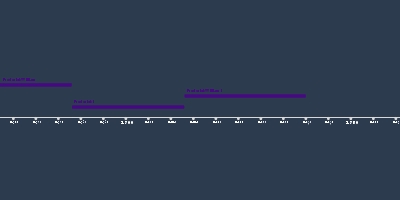19th Century Growth of Science (jan 1, 1800 – jan 1, 1900)
Description:
Breakthroughs in the sciences profoundly influenced the Western worldview and spurred the creation of new products and whole industries. Natural and social sciences were established as highly respected fields of study. Unlike in the Scientific Revolution, scientific advancements led to significant improvements for the population.Advances in industrial technology resulted in a growth of scientific discoveries that resulted in actual material improvements for the general population. The work of Pasteur and others in biology and medical sciences was one such benefit. Thermodynamics investigated the relationship between heat and energy. By midcentury, physicists formulated the fundamental laws of thermodynamics, which were then applied to mechanical engineering, chemical processes, etc.
Chemists managed to measure atomic weights. Dmitri Mendeleev developed the periodic table and periodic law. Practical applications arose, like the use of the byproduct of coke ovens for dyes. Electricity became a commercial form of energy, used in communications like the telegraph, electrochemistry, and central power generation.
Charles Lyell claimed the geological processes slowly formed the earth’s surface over a long time, discrediting biblical beliefs. Jean-Baptiste Lamarck asserted that all forms of life had arisen through a long process of continuous adjustment to the environment, which also challenged religious beliefs. These ideas paved the way for Charles Darwin.
Darwin collected specimens of different animals on a voyage to Latin America and the South Pacific. Using fossil evidence and the advice of Lyell, he concluded that all life gradually evolved from a common ancestral origin. He summarized his theory of evolution and the idea of natural selection in On the Origin of Species by the Means of Natural Selection. Some hailed his work while others condemned it, especially for being “anti-Christian”.
Modern universities became modernized, enlarged, and professionalized. Education emphasized controlled research. Social scientists studied large samples of data that governments collected in an attempt to understand things like capitalism and population growth. Sociology emerged, and most thinkers had a pessimistic view of society, mourning the loss of tradition and community.
By the 1860s, experts began to connect filth and the spread of disease but had little idea of how the process worked. French chemist Louis Pasteur developed germ theory. He used a microscope to monitor the fermentation process and avoid spoilage in brewers. He found that fermentation depended on the growth of living organisms, which could be mitigated through heating. This changed the scope of the spread of disease. In the 1870s, German doctor Robert Koch and his coworkers developed pure cultures of harmful bacteria and described their life cycles. For decades, researchers identified organisms responsible for different diseases. This led to the discoveries of vaccines. After Pasteur showed that the air was full of bacteria, English surgeon Joseph Lister connected aerial bacteria and wound infection. He developed chemical disinfectant In the 1880s, German surgeons developed the practice of sterilizing everything that entered the operating room.
Added to timeline:
Date:
jan 1, 1800
jan 1, 1900
~ 100 years
